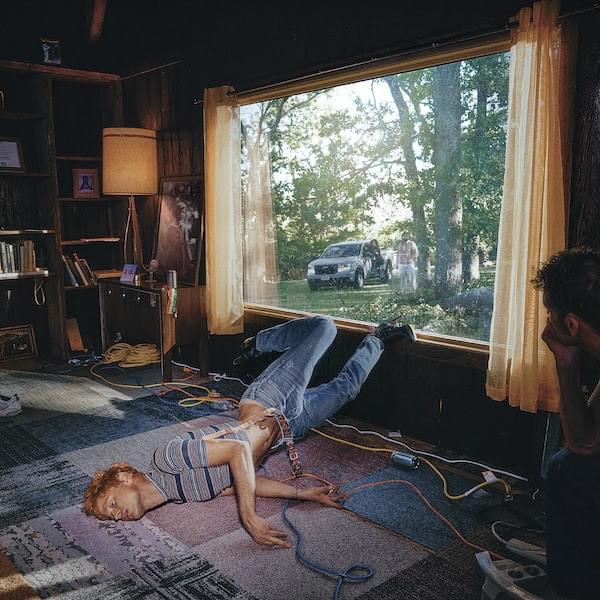The Rest Is Noise: Paris, Nostalgia and Stravinsky
Nostalgia is a funny thing. Few feelings are so difficult to describe and yet so universally experienced, recognised and understood. The sheer power of this mysterious melancholy has frequently caused us to radically edit and scribble in the margins of our history books, excising uncomfortable details and highlighting the more romantic ones. In our age of rampant retromania, these trends should feel familiar, and increasingly we are becoming enamoured with memories of times of which we were not even a part (the fact that Tame Impala were one of the most lauded bands of 2012 should prove my point). Yet scarcely has an era been more mythologized and put on a pedestal than Paris at the turn of the 20th century, a world that is explored in great depth in the ‘Paris’ section of the Southbank’s The Rest Is Noise Festival.
And it’s easy to see why the era of roaring Paris remains so attractive. In a fragmented world, the notion of one area (for it is not even the city as a whole, but the district of Montparnasse) being the centre of the world is wildly implausible, so it should be no surprise that the idea of the city as a veritable Mecca for artists, writers and musicians appeals to the nostalgists amongst us. But the Southbank’s weekend of lectures, workshops and concerts made an active effort not to massage the reputation of Paris as some kind of artistic theme park, instead framing our perceptions of the period with critical insight rather than rose-tinted pontificating.
Andrew Hussey, the author of Paris: The Secret History, gave the inaugural talk of the weekend’s proceedings is testament to this refreshing attitude. Aware of the potentially clichéd notion of a ‘secret history’, he nevertheless tells us the story of Paris, not through the reprobate artists that adopted it as a home, but through the Parisians themselves. Far from being a purely fantastical, romantic tangle of picturesque paths whose sole purpose seemed to be that of inspiration, the city was ravaged by a decade of death in the 1910s, and moreover felt an economic devastation, especially compared with the affluence of the late 19th Century. And it is through Hussey’s remarkable portrait of the Parisian mentality that nostalgia is revealed as one of the most necessary tensions for the most groundbreaking musical works of the century.
Nowhere is the nostalgia problem more succinctly and beautifully presented than in Woody Allen’s Midnight in Paris, the film used to close the weekend. The feature sees Owen Wilson (who is an unexpectedly decent analogue for a young Allen) have his own obsession with the era satisfied through late night encounters with his heroes from the past, only to have his myth of modernity shattered by the realisation in film’s denouement that everyone longs for a golden age. It is this essentially backward-looking nature of the time that was (and still is) attractive to many, and it was also the desire to update, subvert and destroy the feedback of the past that led to this hotbed of creativity. Tristan Tzara wrote in his Dadaist manifesto of 1918, ‘let each man proclaim: there is a great negative work of destruction to be accomplished. We must sweep and clean.’
{pagebreak}
There were many gestures in the city that did react to the past with a destructive edge, not least the work of the Dadaists and the myriad literary breakthroughs, notably the publication of Ulysses. But of all of these actions, one of the most singularly relentless assaults was the performance of Igor Stravinsky’s ballet The Rite of Spring in 1913. Performed on 16 February at the Royal Festival Hall, the London Philharmonic Orchestra satisfyingly provided the ‘Paris’ segment of the festival with its perfect conclusion through the ferociously pummelling rhythms. Needless to say, the performance was flawless, which is to be expected from a work that has become such a standard piece of repertoire. But its very status as ‘standard’ is remarkable, and goes to show just how totally the work and its composer changed the face of music’s future.
Of course, the weekend’s ever-questioning investigative quality did not just reiterate its canonical nature without questioning the nature of its composition and the reaction to it. Infamously, the premiere of the piece induced a near-riot, though Jonathan Cross’ lecture on the composer ponders on how apocryphal this spontaneous musical riot, suggesting that if it did happen, it was carefully orchestrated for publicity purposes. Nevertheless, the piece itself was (and for some, remains) shocking, with its angular, cubistic approach to melody and structure, and, above all, its pounding rhythmic impetus. The style was a great boxing match of modernism, its work-like mechanism reflective of the machinery and noise that defined the modern world.
The image Cross cuts of the composer is a peculiar one, madcap and visionary, yet completely concerned with his own self-image. But, far from being a divinely inspired cry of modernistic originality, The Rite of Spring was indeed a patchwork of expertly assembled images and influences. There is a parallel here to be made with pop analogue: David Bowie. Both revolutionary, chameleonic and iconic, yet their genius comes from invention through skilful appropriation. The Rite of Spring’s portrayal of a primitive sacrifice assembles its patchwork texture from the borrowing of numerous Slavic folk tunes – yet Stravinsky himself denied any specific influence, himself deliberately trying to conceal his ties to the past.
Afterwards, Stravinsky abandoned his rampant modernism for a more subdued and balanced, shapeshifting in a manner many of us are familiar with. But his modernistic and mechanistic music lived on in influence and reputation. But the weekend left me pondering less on the nature of the music contained within, and more on our current musical climate, feelings only exacerbated by currently standing knee-deep in Simon Reynolds’ Retromania.
Nostalgia, with its bittersweet comforts, has become an ever more intensified factor in music of the present. Solace is offered in vintage house, or early minimalism or 90s alternative or whatever is en vogue, and this writer is as guilty as anyone else in the popularity and interest in these sounds. Yet the comfort of these experiences and burrowings in the past reveal our Golden Age obsessions, and furthermore reveal what we long for: the shock of the new.
- Car Seat Headrest present new single, "CCF (I’m Gonna Stay With You)"
- Common Holly signs to Keeled Scales and announces new album, Anything glass
- Wire announce two special Record Store Day releases
- The Beaches return to announce third album, No Hard Feelings
- No Windows unveil new single, "Easter Island"
- Nick Mulvey details fourth studio album, Dark Harvest (Pt. 1) and accompanying world tour
- S.G. Goodman announces her third studio album, Planting by the Signs
Get the Best Fit take on the week in music direct to your inbox every Friday

Great Grandpa
Patience, Moonbeam

Deafheaven
Lonely People With Power

Perfume Genius
Glory





